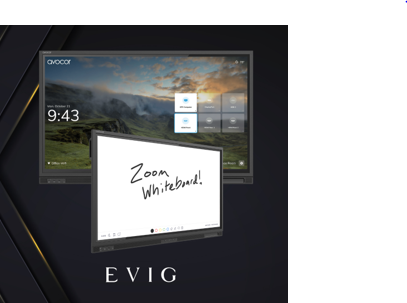Avoid the Screen Slip-Up: Simple Tips for Using Interactive Displays

Interactive screens are super helpful for classrooms, offices, and meetings. But you must avoid some easy-to-make mistakes to get the best out of them. Here are some simple tips to help you make sure your interactive screen works excellent every time.
Pick the Right Size for the Room
Choosing the right size interactive screen is important. If the screen is too small, people in the back won’t see clearly; if it’s too big, it can be hard to reach all parts. A 55-inch interactive screen is a good choice for small rooms. For medium rooms, go with a 65-inch screen. And for large spaces, 75-inch or 86-inch screens work best. Make sure everyone can see and use the screen comfortably.
Make Sure It’s Easy to Touch
Some interactive screens are slow to respond when you touch them, which can be really frustrating. Before you buy a screen, check how responsive it is. A good interactive screen will quickly recognize different touches, like a finger, pen, or palm. If your screen supports many touch points at once, like 20, more people can use it together without issues.
Place the Screen in the Right Spot
Where you place your screen matters a lot. If it’s too high or too low, it’s hard for people to use. Also, avoid putting it in a place with lots of glare from windows or lights, as this makes the screen hard to see. Try to place your interactive screen where everyone can reach and see it easily.
Keep It Clean from Smudges
Interactive screens tend to get dirty quickly with fingerprints, which can make the display look messy and hard to read. If your screen doesn’t have anti-fingerprint glass, take a microfiber cloth and wipe it to keep it clean. A clean screen makes everything clearer and more professional.
Use the Right Tools
Your interactive screen might allow you to use your fingers, a stylus, or even your palm. Using a stylus is better for drawing or writing as it’s more precise. Check what tools work best for your screen and use them to get the best results.
Sound Matters Too
Good sound is important when using an interactive screen, especially during presentations or video calls. Make sure the built-in speakers are loud and clear enough. If the sound isn’t good, consider adding external speakers for a better experience. Many interactive screens, like the ones provided by Evig, an audio video solution provider in the UAE, come with high-quality sound options built in.
Connect with Ease
Interactive screens come with many connection options. Ensure your screen has the right ports for connecting laptops, tablets, or phones. It makes switching between different devices easy during meetings. Check for USB, HDMI, and wireless options for flexibility.
Turn It Off When Not in Use
It’s easy to forget to turn off the interactive screen when you’re done. But leaving it on can waste energy and even damage the screen over time. Always remember to turn it off when you’re not using it. It will make your screen last longer and save on power.
Update the Software Regularly
Just like your phone or computer, your interactive screen needs updates. These upgrades improve your screen’s functionality by fixing issues and adding new features. Look for software updates and install them when available. It’s quick and keeps your screen running smoothly.
Train Your Team or Students
An interactive screen is only as good as the people who use it. Make sure your team or students know how to operate it. Take a few minutes to show them the basic functions, like switching between tools or connecting their devices. Training goes a long way in ensuring everyone gets the most out of the screen.
Conclusion
Interactive screens are excellent for making presentations and meetings engaging. By following these simple tips, you can avoid common mistakes and ensure your screen works perfectly. Remember to choose the right size, keep it clean, and test the touch responsiveness to get the most out of your interactive screen.





